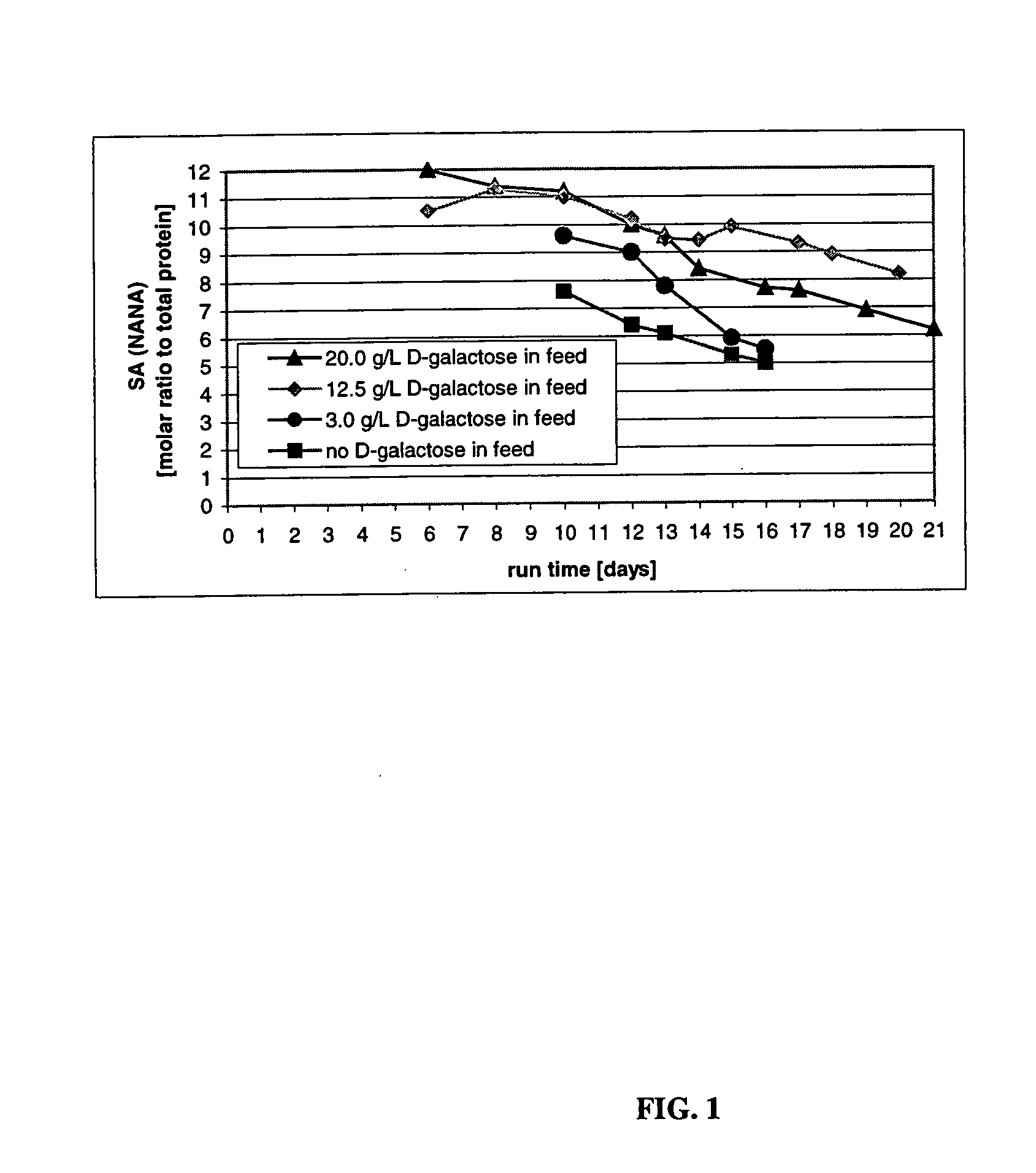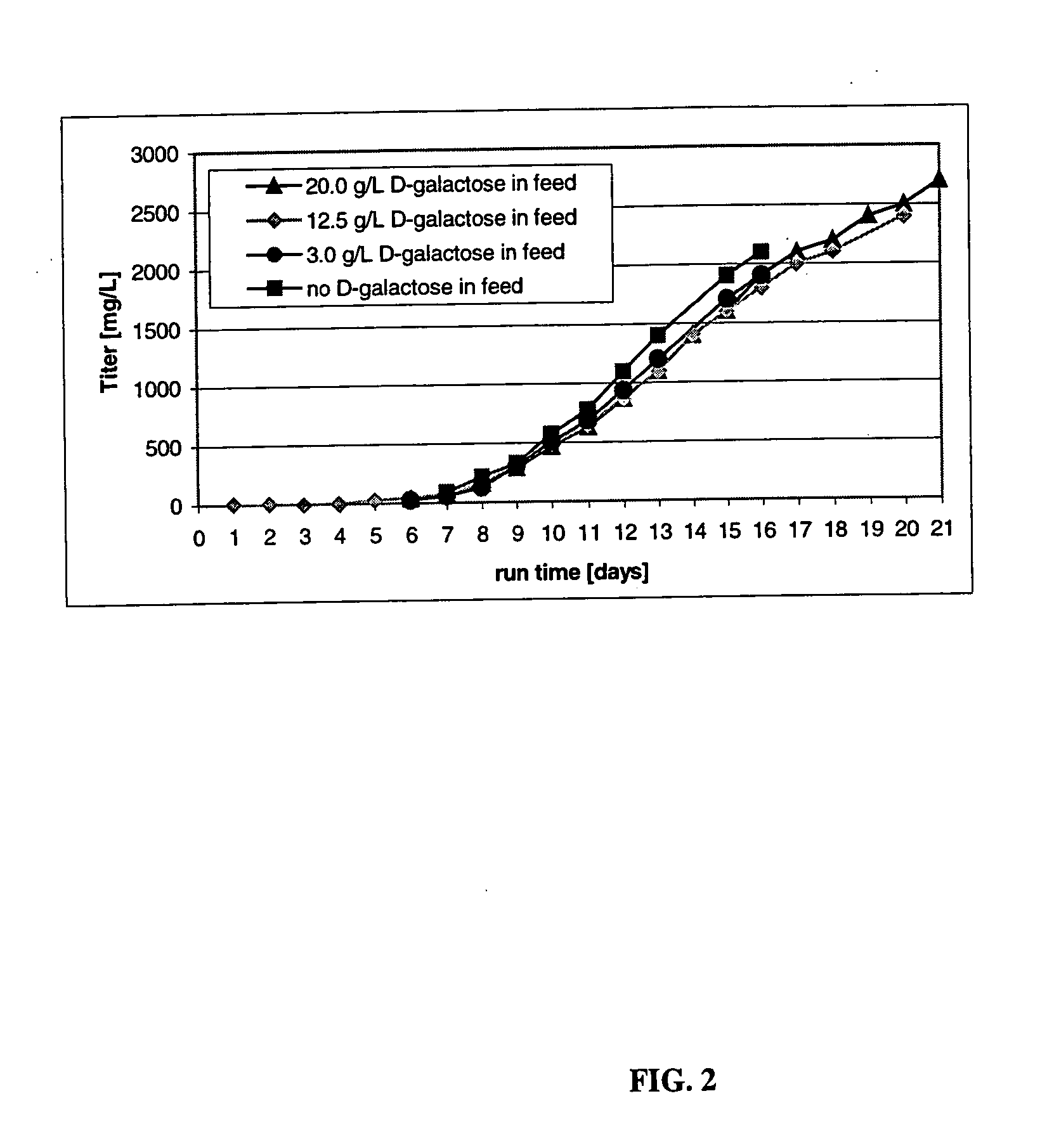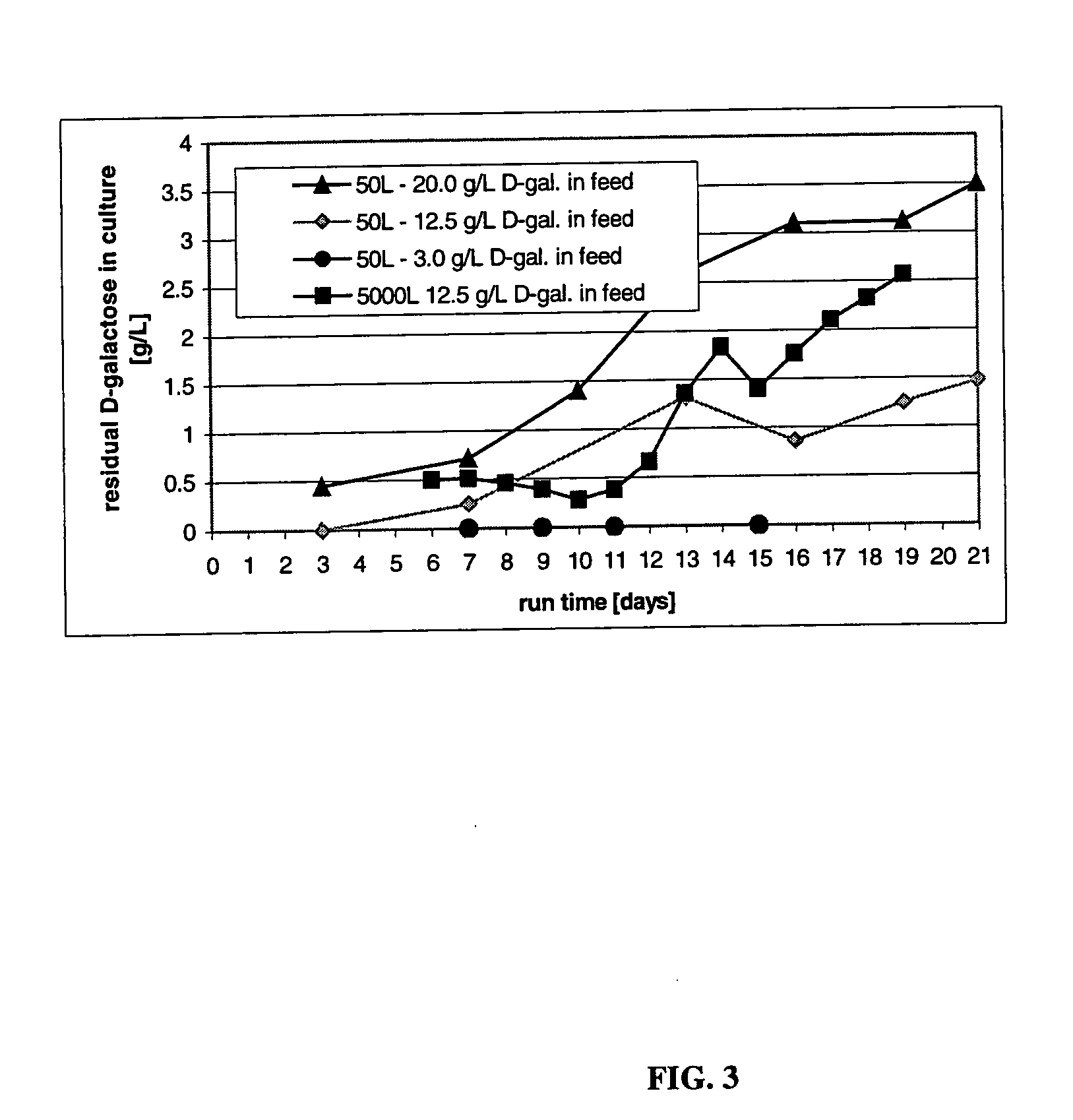Product quality enhancement in mammalian cell culture processes for protein production
a cell culture process and protein technology, applied in animal/human proteins, peptides, enzymology, etc., can solve the problems of affecting the immunogenicity and clearance rate of products, affecting the viability of cells remaining, and the run time of cell culture processes, especially non-continuous processes, to achieve the effect of increasing the sialic acid content of glycoprotein products
- Summary
- Abstract
- Description
- Claims
- Application Information
AI Technical Summary
Benefits of technology
Problems solved by technology
Method used
Image
Examples
example 1
[0206] This Example generally describes the D-galactose continuous feed culturing process of the present invention for the culturing of recombinant cells that produce the exemplified CTLA4Ig fusion protein as described herein in Example 2.
[0207] Cells were expanded in modified CD-CHO medium (Invitrogen, CA) containing glutamine, sodium bicarbonate, insulin, and methotrexate (Table 1) using T-75 flasks, 250, 500 and 1000-mL spinners. T-flasks and spinners were incubated at 37° C. and 6% CO2.
TABLE 1Modified CD-CHOMedium ComponentConcentrationCD-CHO 25 × Acids I40ml / L(Invitrogen, Carlsbad, CA)CD-CHO 25 × Acids II40ml / L(Invitrogen, Carlsbad, CA)CD-CHO 25 × Salts I40ml / L(Invitrogen, Carlsbad, CA)CD-CHO 25 × Salts II40ml / L(Invitrogen, Carlsbad, CA)L-glutamine0.585g / L(Invitrogen)r-human insulin0.1ml / L(10 mg / mL)(Invitrogen)Methotrexate5μl / L(20 mM solution)(ICN, Costa Mesa, CA)Sodium bicarbonate2.22g / L(Mallenkrodt Baker,Phillipsburg, NJ)
[0208] After sufficient inoculum was generated, the ...
example 2
[0211] This Example describes the culturing of cells producing CTLA4Ig, shown as −1 to 357 or +1 to 357 in FIG. 3, (encoding DNA deposited as ATCC 68629), using several sets of experimental culture conditions for comparisons related to the end titer and end sialic acid parameters of the protein product. These results were obtained from a cell culturing method involving both a two step temperature shift process and a daily feeding regimen in which a sialic acid sustaining effective amount of D-galactose was present in the feeding medium. Improved product quality enhancement was observed.
[0212] Culture conditions in the 5, 50, and 5000-L bioreactors were controlled as follows: pH at 7.0, dissolved oxygen at 40-60%, agitation at 30-50 rpm, back pressure at 5 psi (ambient pressure for 5-L glass reactors). A two-temperature shift cell culture method comprising a first temperature of 37° C., lowered to a second temperature of 34° C. on day 6 and to a third temperature 32° C. on day 10 wa...
example 3
[0224] This Example relates specifically to the temperature shift cell culture processes as described herein in Examples 4-6 and provides materials and reagents employed in the temperature shift processes for the culturing of recombinant cells that produce the CTLA4Ig fusion protein.
1. Cell Culture Medium
[0225] The basal cell culture medium used for all phases of cell inoculum generation and for growth of cultures in bioreactors, including 5 liter (5 L) and 50 liter (50 L) production reactors, was modified CD-CHO medium containing glutamine, sodium bicarbonate, insulin and methotrexate (Invitrogen, Carlsbad, Calif.; see Table 1). The pH of the medium was adjusted to 7.0 with 1 N HCl.
[0226] For feeding cells in the fed-batch process, a modified feed medium, i.e., eRDF-1 medium (Invitrogen), containing glucose, glutamine, insulin and TC Yeastolate (Becton-Dickinson, Franklin Lakes, N.J.), (Table 2), was employed. For these experiments, galactose was not present in the feeding medi...
PUM
| Property | Measurement | Unit |
|---|---|---|
| concentration | aaaaa | aaaaa |
| temperature | aaaaa | aaaaa |
| temperature | aaaaa | aaaaa |
Abstract
Description
Claims
Application Information
 Login to View More
Login to View More - R&D
- Intellectual Property
- Life Sciences
- Materials
- Tech Scout
- Unparalleled Data Quality
- Higher Quality Content
- 60% Fewer Hallucinations
Browse by: Latest US Patents, China's latest patents, Technical Efficacy Thesaurus, Application Domain, Technology Topic, Popular Technical Reports.
© 2025 PatSnap. All rights reserved.Legal|Privacy policy|Modern Slavery Act Transparency Statement|Sitemap|About US| Contact US: help@patsnap.com



